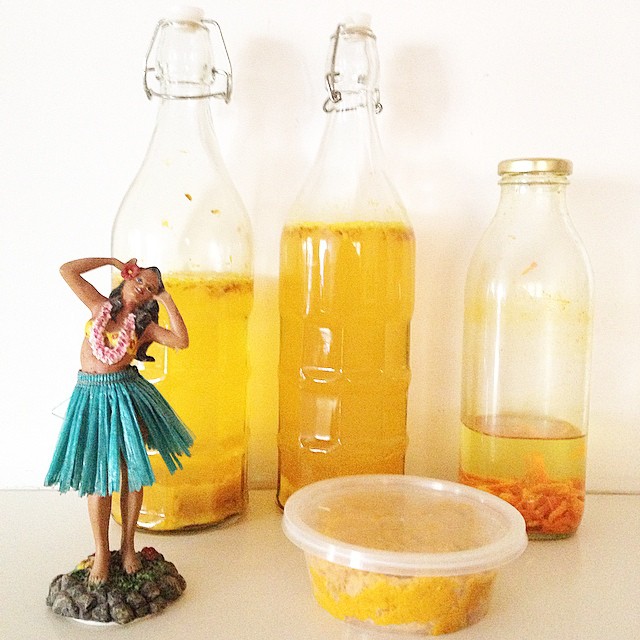I’ve been making my own ferments for a while now. It started a few years back with pickled daikon and sauerkraut and has developed into a passionate hobby. I’ve recently added fermented turmeric tonic, kombucha, ginger-ade soda, cream cheese, beet and turmeric kvass. My next book is going to take things to even mouldier levels!

I’ve mentioned it before, but I’ll say it again. Fermenting your vegetables is THE BEST thing you can do for restoring and maintaining the health of your gut. And the stuff is a boon for autoimmune folk like me. I’ve shared before how the process all works, the magic ingredient being a starter culture.
When I first started out, I used whey – a protein derived from dairy products (I make my own) – as a starter culture to get the fermenting process moving along. Whey acts as an inoculant, reducing the time needed for sufficient lactic acid to be produced to ensure preservation of the food.
Using salt, or brine, is the more traditional method of lacto-fermentation. Before the invention of refrigeration, salt was used to preserve foods. Most bacteria need a warm, wet environment to thrive. Salt draws out the moisture in food, denying such a watery environment. Conveniently, there is one bug that is very salt tolerant: lactobacilli. By suppressing the growth of other bacteria and mould, salt provides a long, slow fermentation process. I like this about it. It’s more mindful and gentle; I feel as though I strengthen my patience when I go slow. Salt also hardens the pectins in vegetables, resulting in an enhanced (though saltier) flavour and crunchier vegetables.
So is it better to use whey or salt?
Whey produces a more rounded flavour in your ferments than salt, but can also lead to slightly mushy vegetables, in part because whey speeds up the ferment process. Some argue milk bacteria only like milk, so it is counter-productive to use whey for veggies. There’s also the argument that whey introduces external bacteria (most milk doesn’t come from the back paddock; it’s from other environments with different bacterial microcosms).
Salt, on the other hand, encourages the growth of local bacteria found on the vegetable itself, which is always best. Salt also creates a slower ferment, which allows for a bit more control.
Me, I remain pragmatic. I don’t live in a temperature-controlled house so the ambient temperature fluctuates wildly throughout the year. That’s Australia for you. In winter I find using whey helps ensure the ferment is robust enough and I use it to control my ferments. In summer, however, salt keeps the process slow enough. I have access to a wider range of healthy, organic vegetables that have been grown in good soil and the salt method works well for me (folk using poor quality veggies find they can’t get salt to activate things). I also find the added crunch and bitier flavour to be refreshing and satisfying in summer. I have had a couple of close calls where an unseasonally warm day will see me rushing my whey-fermented (and vigorously bubbling) kraut to the fridge to cool down after just one day. The veggies will be a mush and the result is not prettier (though still edible). I also use whey in recipes like mayonnaise, tomato sauce and fermented ginger-ade soda where salt will be just too much and a faster ferment is required.
So the upshot? Salt, where practical. It’s cheap, accessible and keeps with the natural order and bacterial environment of things. Whey, where required: in winter, when a boost is required or where salt would ruin the taste of your ferment.
If you’d like to learn more about lacto-fermentation, I strongly recommend Sandor Katz’ book Wild Fermentation. He’s a salt-man, choosing traditional fermentation methods. You can also find my previous adventures in fermenting here and more reader tips and tricks here.
Do you have a take on this issue? I’m always up for being proven wrong. Any specific situations where whey or salt is best?

